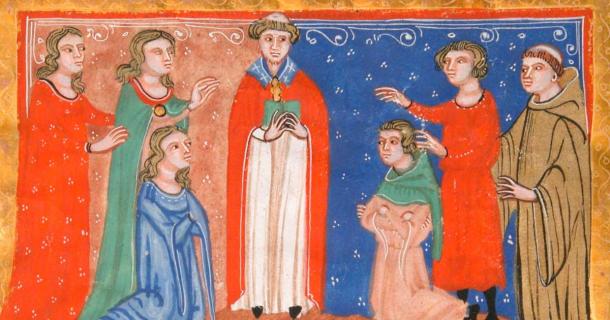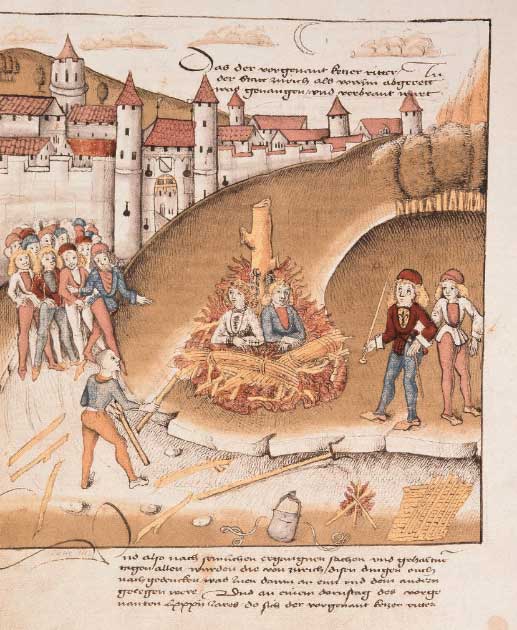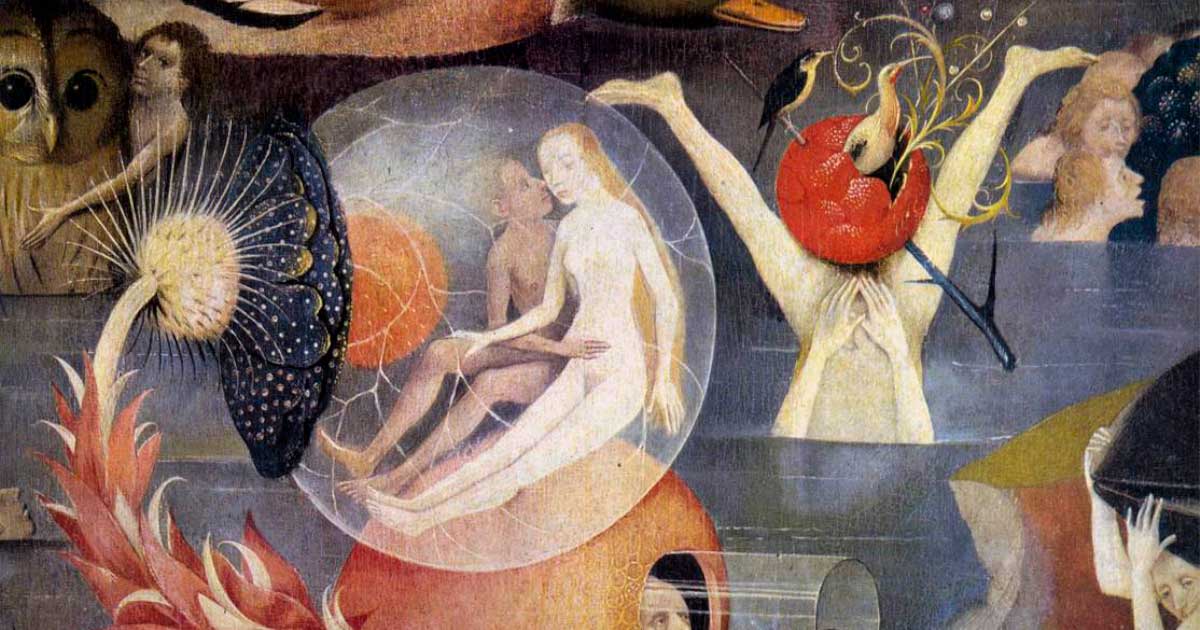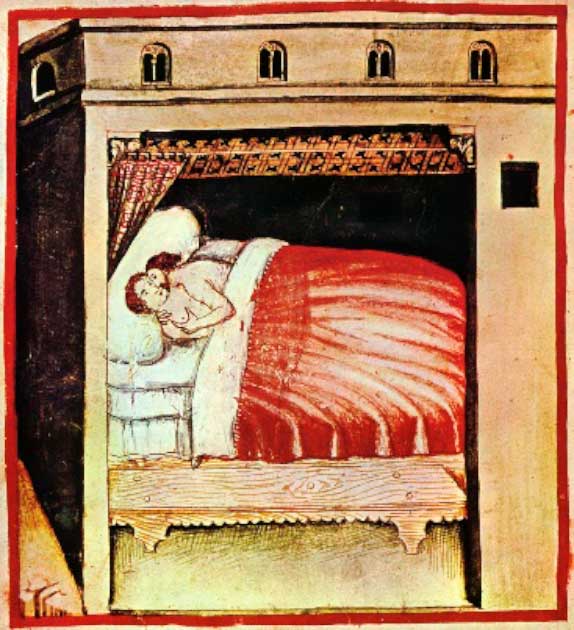Medieval Sex Rules - How Not to Have a Good Time
These days, sex is everywhere. It's in our books, films, songs, TV shows, and now, even our history articles. Although some countries still impose strict rules upon sex, the fact is most western countries have relaxed in their approach to sex. Today, sex is something to be enjoyed, not to be ashamed of. But that hasn’t always been the case. In medieval times, sex came with so many rules and stipulations that it’s a wonder we didn’t go extinct.
Married People Only Please
In medieval times, the only people who were allowed to have sex were those who had exchanged marriage vows. Sex before these vows, especially in early medieval times, was seen as a major sin. In fact, anyone found having sex before marriage could be executed by disembowelment!
While this may sound pretty clear-cut, it wasn’t. There were two sets of vows, and this caused a certain degree of confusion. There were betrothal vows, which a couple used to pledge that one day they would get married, and the wedding vows which they said at the wedding. These vows held equal weight; once a couple had made a vow, they could have sex with no repercussions (besides the ones Mother Nature intended).
A betrothal vow could be broken, but a wedding vow could not, as the medieval church was not a big fan of divorce. The betrothal vow was not a loophole, however. People could not just get betrothed, have sex, and then call the wedding off. If a couple had sex after making the betrothal vow, they were automatically married in the eyes of the church. Not everyone realized this though, and so ecclesiastical courts spent a fair amount of time dealing with couples who didn’t realize they had gotten married.
The only way out of an unhappy marriage was sexual impotence. Since marriage was meant to lead to procreation, if your partner couldn’t produce babies, it was grounds for divorce. Some men attempted to use this as another loophole. They would claim impotence with their old wife, but magically be able to do the deed again with their new wife.
The Catholic Church soon grew wise to these shenanigans and instituted new rules. To corroborate any claims of impotence, a couple had to have been married for at least three years and witnesses were required.
- Medieval Sex and Scandal: Consistory Courts and Morality in Medieval England
- Penitentials - Medieval Priests Had Handbooks to Deal with Sexual Deviance

Manuscript Leaf with Marriage Scene, from Decretals of Gregory IX, circa 1300 (Public Domain)
The Catholic Church Decided When Sex Was Okay
The Catholic Church wasn’t happy merely telling people who they could have sex with. There were also strict rules as to when couples could enjoy each other's company.
The religious calendar featured “chaste days,” during which there could be no fornication. There was to be no sex during the major holidays (like Christmas and Easter), nor during the six weeks of Lent. Sundays and fish days were also out.
On top of this, sex was to be avoided during pregnancy, menstruation, and lactation. This wasn’t so much enforced by the church as recommended by squeamish medieval doctors. Overall, this didn’t leave a lot of days left out of the year.
In addition, on the days husbands and wives were allowed to have sex, they needed to be prepared. Under medieval law, sex had to be given on demand. Saint Paul had declared husbands and wives were to “deliver unto each other what was due” (sex). Both partners were equal when it came to the idea of marital debt. If your partner was in the mood, legally, you had to be too.
Luckily, as time progressed, the Catholic Church realized a lot of people were simply ignoring the rules and so it relaxed its stance. By the 12th century, most of these rules had become suggestions. The church preferred it if people spent their holy days worshiping God, but they weren’t going to kill you over it anymore.
- Spiritual Marriage and Holy Virginity: The Medieval Practice of Sexless Marriage
- Medieval Divorce by Combat: Guaranteeing ‘til Death do us Part’
Depiction of a couple in bed, from the 14th century book Tacuina Sanitatis (Public Domain)
Rules on How the Deed was Done
The Catholic Church didn’t stop with rules on when or with whom people could have sex. According to the church, sex was all about one thing and one thing only: procreation. This meant that people should only have sex if they were actively trying to have a baby. Having sex purely for pleasure was a major sin.
Another major sin was trying anything too risqué in the bedroom. Sex was viewed as something the man did to the woman. The only sex that was permitted was sex in which men took the active role while women remained passive. This meant that only one sexual position was allowed, the so-called missionary pose.
Alternative sexual positions, for example, the female being on top, were seen as unnatural. It was believed that other positions undermined the man's natural masculine dominance. Bizarrely, some of the more liberal-minded theologians spent time ranking how sinful sexual positions were based on how natural they were. The more ‘unnatural’ the position, the more likely it was someone was going to hell.

The Catholic Church also attempted to regulate ‘unnatural’ sexual positions. A drawing from a 15th century French Book of Hours illuminated manuscript (Public Domain)
Other kinds of sexual contact were also banned. This meant no oral sex, no anal sex, no masturbation, and no foreplay. Any sexual act that wasn’t aimed specifically towards making babies was deemed to be sodomy.
Breaking these rules came with some awfully harsh punishments. Sadly, this meant homosexuals, in particular, suffered greatly. Men found guilty of sodomy could face being burned at the stake, hung, or even starved to death.

The burning of the knight Richard Puller von Hohenburg with his servant before the walls of Zürich, for sodomy, circa 1483 (Public Domain)
Breaking the Rules of Medieval Sex
There wasn’t any part of sex that the Catholic Church didn’t attempt to regulate, and punishments were often severe. The church just had one problem: people like having sex. Even worse, the more forbidden something is, the more attractive it often is as well.
Evidence suggests that despite all the church's threats, most people just ignored the rules, knowing as long as it was behind closed doors, the church would have a hard time proving anything.
If anything the church's stance on sex backfired. Their focus on sex being within marriage and only for procreation often pushed people away from their spouses. Many medieval people, especially those of the upper classes, had two partners. There was frequently one spouse, who they simply married and had babies with, and a second, extramarital romantic partner with whom they did all the fun, supposedly sinful things.
Conclusion
Of course, churches today still have teachings regarding sex that they expect their practitioners to follow. Thankfully, however, most people in the West are free to choose whether they follow them or not. It is a matter of belief, not law.
Today, our private lives are our own and what we do in private is our business. However, it is important to remember that as shocking or amusing as some of these rules appear today, there are parts of the world where these kinds of rules are still enforced. A look at these rules is a reminder that we shouldn’t take the freedoms we enjoy today for granted.
Top image: Medieval sex was frequently restricted by the Catholic Church in many ways. Detail from The Garden of Earthly Delights by Hieronymus Bosch, circa 1500. Source: Public Domain
By Robbie Mitchell
References
Davidson, L. February 10, 2022. Love, Sex and Marriage in Medieval Times. History Hit. Available at: https://www.historyhit.com/medieval-love-sex-and-marriage/
Sex in the Middle Ages. February 2013. Medievalists.net. Available at: https://www.medievalists.net/2013/02/sex-in-the-middle-ages/.
Laumonier, L. February 2021. A Guide to Medieval Marital Sex. Medievalists.net. Available at: https://www.medievalists.net/2021/02/medieval-marital-sex/
Salisbury, E. 1991. Sex in the Middle Ages: A Book of Essays. Garland.




















